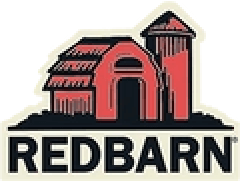
What's the Deal with Meals?
Meals. Dun dun dun. The connotation attached to the word is scary. Halloween is just around the corner, and we promise this isn’t a spooktober trick!
Most pet parents assume meals are bad for dogs and should not be in their food. However, not all “meals” are bad.
In fact, some meals are a great low-fat protein source for your pup! But it’s important to know the difference so you can feed your dog the best.
First, what exactly are meals?
By-Product Meals
When you hear hushed voices amongst fellow pup parents around the term “meals” in dog food ingredients, it’s usually associated with by-product meals. However, meals as a whole have gotten a bad rep.
By-product meals are dried animal-parts including organ meat like kidneys, hearts, liver, and other fatty tissues. These parts aren’t typically consumed by humans because they are considered low-quality proteins.
According to the pet industry’s regulatory agency the Association of American Feed Control Officials (AAFCO), by-products are defined as, “secondary products produced in addition to the principal product.” This means by-products are typically the excess, or unwanted animal parts left over after processing human food.
Rendering is the name of the process to make by-products. It involves cooking down animal parts to remove moisture and fat, turning what’s considered “waste” animal tissue into a powdered, edible substance.
In worse case scenarios, manufacturers may include other parts of the animal, like teeth and feathers into their by-product meals when proper manufacturing practices aren’t in place.
Note: these parts should not be rendered, but without close inspection, they may end up in by-product meals.
Quality Meals
As we mentioned before, not all meals are bad. Many dog food brands use meat meals as a primary ingredient. But, it’s important to distinguish how meals are named to determine their quality.
Try to avoid meals that do not specify the animal source –– for example, “meat meal” vs. “chicken meal” or “salmon meal”. Meat meal is allowed as a descriptor on dog food packaging, but it doesn’t name the exact protein source. This could mean a mix of low-quality proteins or scraps.
Protein-specific meals are also a rendered product, however, they are made with high-quality proteins instead of unwanted animal parts. AAFCO defines meat meal as rendered product free of blood, hair, hoof, horn, and other parts.
Since the rendering process helps to destroy disease-causing bacteria, it’s a necessary process in production. Protein-specific meals are often paired with other high-quality meats, creating a wholesome nutrient profile for your dog’s food.
In addition, protein-specific meals are protein-rich, actually containing more protein pound for pound than raw or whole meat.
How is that possible? Because when protein-specific meals are rendered most of the fat and water contents are removed – so you’re left with a low-fat, high-protein meal. So technically, you’re getting more meat during the meal process than you would with an actual piece of whole meat.
First Five Ingredients
The first ingredients in your dog’s dry food should always include protein. Your dog needs protein to fuel their growth and development.
Contrary to popular belief, dogs are not carnivores (they’re actually omnivores because of their ability to digest carbohydrate-based foods) so they need a healthy balance of proteins and other wholesome ingredients.
That’s why the first ingredients of your dog’s food should start with animal proteins, but also feature other healthful sources of carbohydrates and fats. But why meat? Protein provides amino acids, which are building blocks in development.
Benefits of protein:
- Healthy skin and coat
- Strong muscles
- Healthy cells
- Tissue development
- Immune system support
Animal proteins like poultry, meat, and fish contain all 12 essential amino acids, also known as “complete proteins” needed in your dog’s body.
Redbarn’s Dry Dog Food starts with animal proteins in the first five ingredients! Each recipe, from Whole Grain to Grain-Free begins with whole meat as the first ingredient. Not only does it feature animal protein in the first five ingredients, but it’s also blended with functional ingredients like pumpkin, sunflower oil, and flaxseed for well-rounded nutrition.
As with all the food you purchase for your pup, be sure to always read the ingredients on the back of the bag.
If you’re ever unsure, you can always ask your vet. Note any specific dietary needs based on your dog’s breed, age, or weight.


